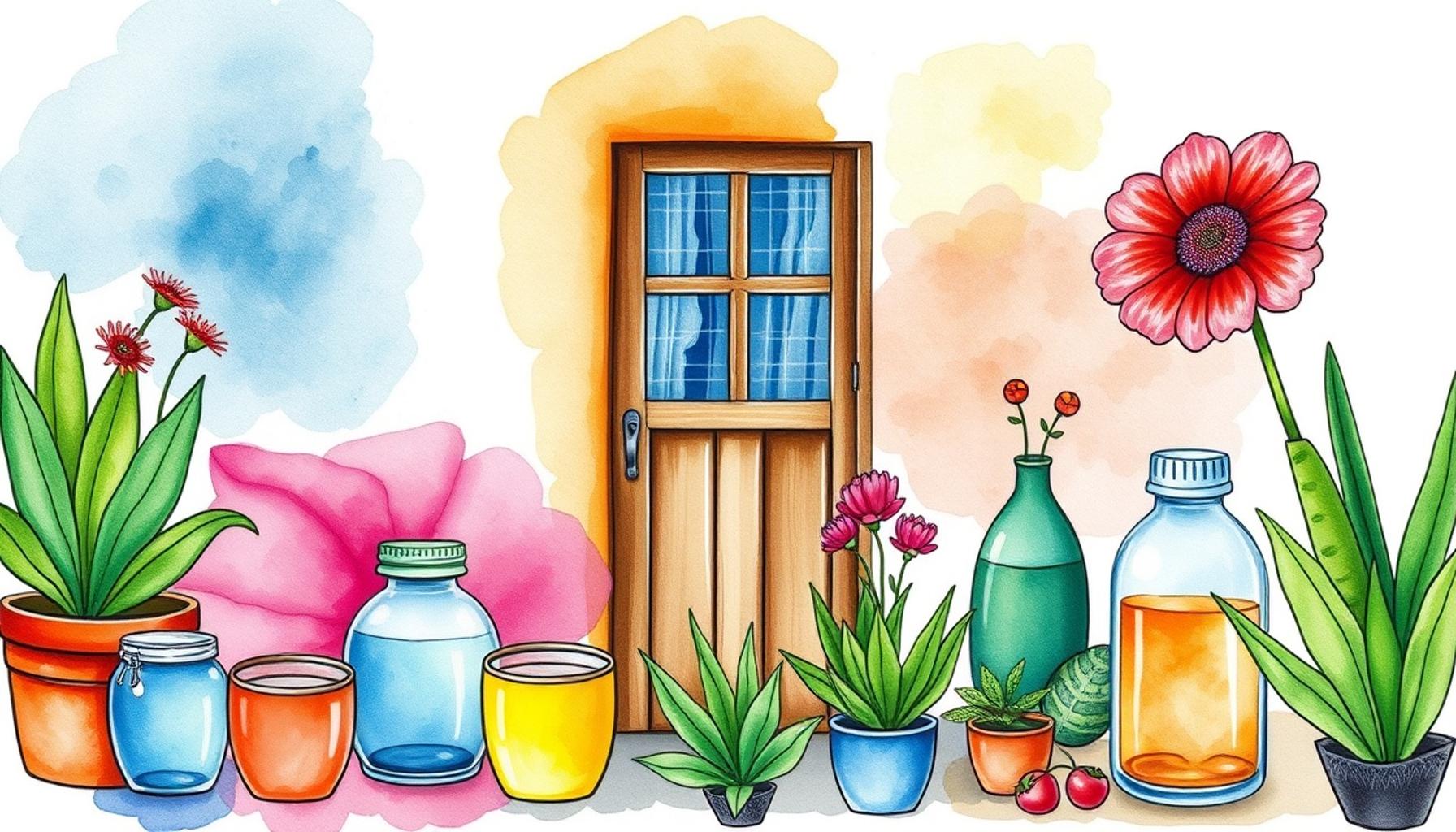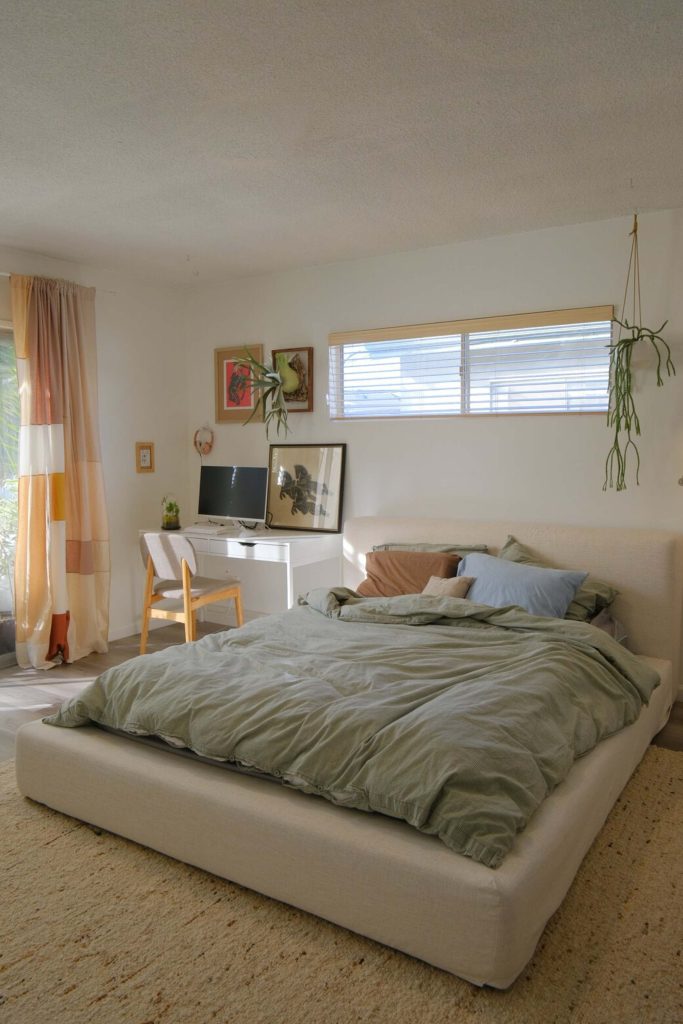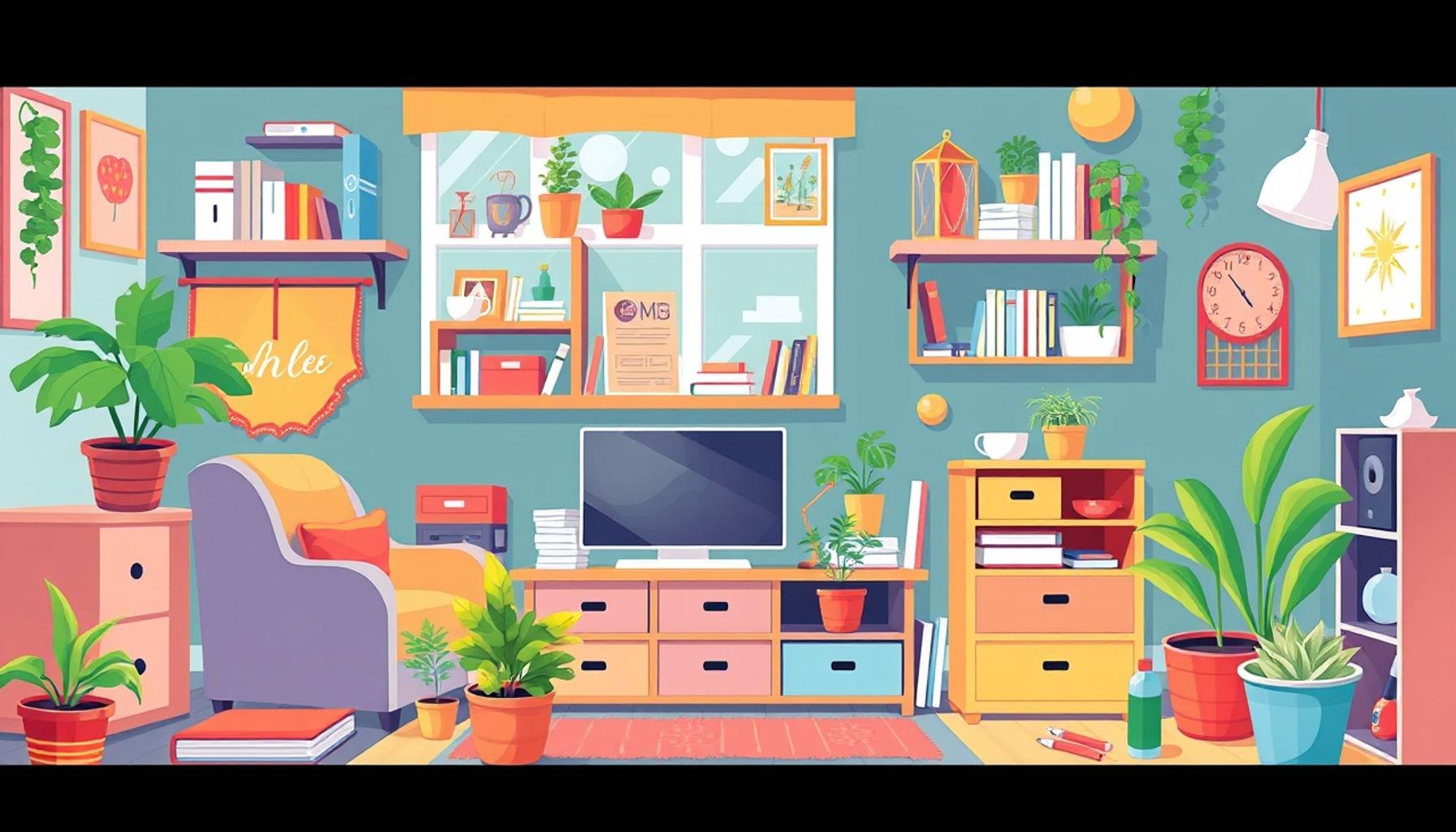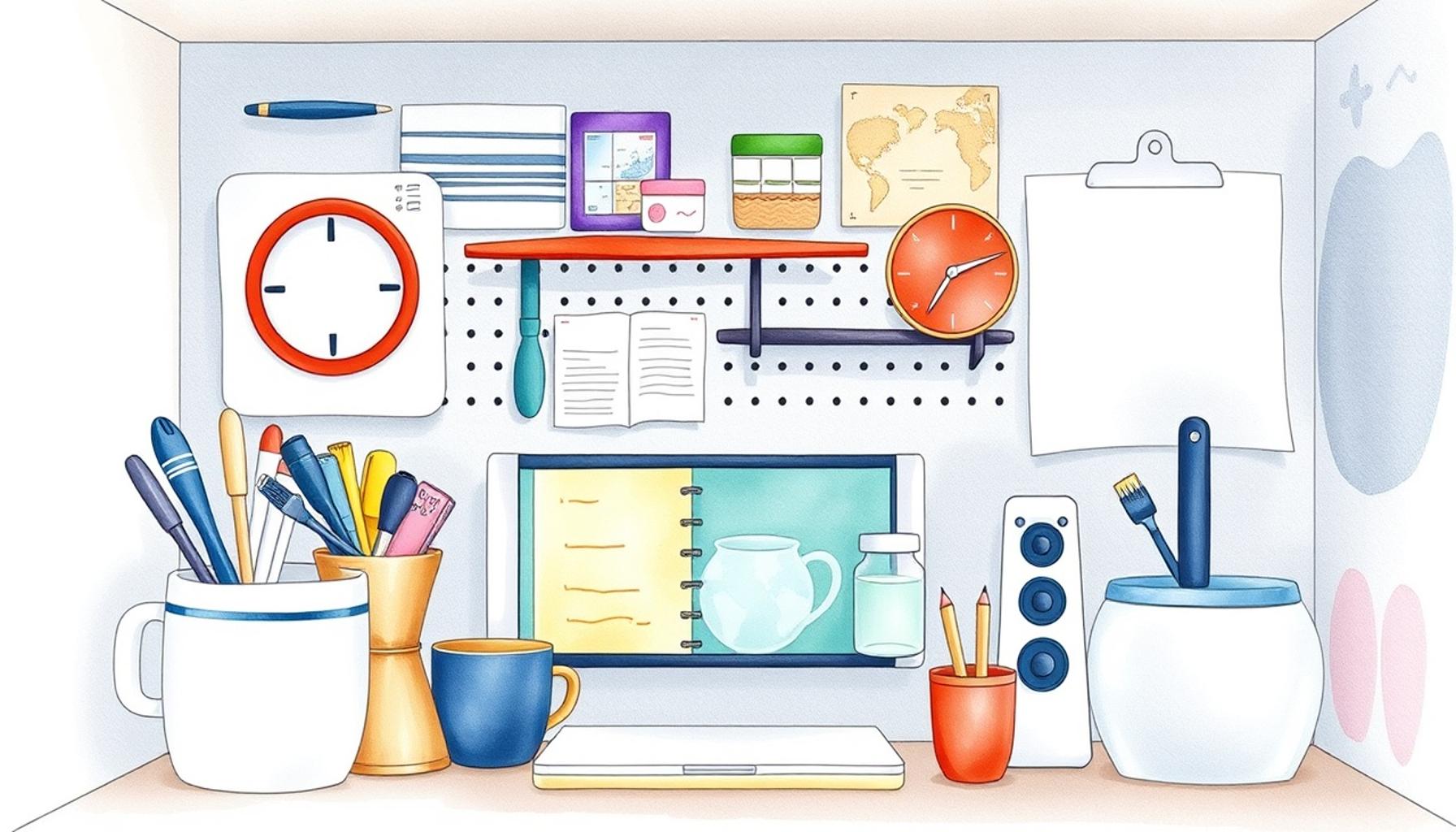Practical Tips to Live with Less and Make Room for the Essential

Embracing Minimalism for a More Fulfilling Life
In a world increasingly defined by excess, the idea of living with less can seem radical yet liberating. Minimalism challenges us to rethink our priorities, focusing on what truly matters rather than getting lost in a sea of possessions. With personal organization at its core, this lifestyle shift not only creates physical space but also mental clarity.
Practicing minimalism can lead to numerous benefits, such as:
- Reduced stress: Decluttering spaces helps to calm the mind.
- Increased productivity: A tidy environment fosters creativity and focus.
- Financial savings: Less spending encourages smarter financial decisions.
For those ready to embrace this transformative journey, we’ve compiled a Top 5 list of practical tips that will inspire you to live intentionally and create space for the essential. Whether you’re just starting or looking to refine your approach, these actionable strategies will guide you toward a more meaningful existence.
Top 5 Practical Tips for Living with Less and Creating More Space for the Essential
In today’s fast-paced world, we are constantly bombarded with messages that equate happiness to the accumulation of possessions. Advertisements, social media, and societal norms often suggest that to be fulfilled, we must own more. Yet, some people are finding that the opposite can be true. By subscribing to a minimalist lifestyle, one can embrace the liberation that comes with owning fewer things, ultimately leading to a more enriched and meaningful life. Minimalism isn’t just about reducing clutter; it’s about making space—physically and mentally—for what truly matters. Let’s delve into five practical tips that will guide you on this transformative journey towards minimalism, ranked from fifth to first.
5. Declutter Regularly
One of the most impactful starting points in your minimalist journey is the act of decluttering. It’s an ongoing process that demands commitment but offers remarkable rewards. The unspoken truth is that our possessions can easily weigh us down, leading to untidy spaces and chaotic minds. Here are some ways to manage this:

- Set a schedule for decluttering. Regularly scheduled sessions, whether monthly or quarterly, can keep your space in check. Many people find consistency to be key, as decluttering becomes less overwhelming with time.
- Implement the “one in, one out” rule. For every new item you acquire—be it clothing, gadget, or book—commit to removing one. This approach ensures that your home remains balanced and free from unnecessary accumulation.
- Tackle one area at a time. To avoid feeling overwhelmed, start small. You might begin with a single drawer or corner of a room, which will provide quick wins and motivate you to continue.
By consistently evaluating the necessity and purpose of your possessions, you can maintain an organized environment that mirrors your desire for simplicity.
4. Embrace Digital Minimalism
In our increasingly digital world, the clutter has shifted from physical to virtual spaces. Digital minimalism is about creating a focused and simplified digital life, enabling you to concentrate more effectively on substantial tasks. To aid in this endeavor, consider these strategies:
- Unsubscribe from unwanted emails and newsletters. Inbox clutter can be just as stressful as physical clutter. Use tools or features in your email client to systematically unsubscribe from spam and irrelevant content.
- Organize your files. Create clearly labeled folders for important documents and discard anything redundant. This practice not only saves space but also reduces the mental burden of having to search through disorganized files.
- Limit social media use. Set specific times for checking social media to free up mental bandwidth for engaging with the real world.
A tidy digital workspace promotes better focus and efficiency, allowing you to give more time and energy to the truly essential parts of life.
3. Create a Capsule Wardrobe
For many, wardrobes are prime examples of excessive consumption. Transitioning to a capsule wardrobe not only simplifies getting dressed but also sharpens personal style. This concept encompasses a curated selection of clothing that transforms with minimal effort. Consider the following tips:
- Choose a thoughtful color palette. Opt for colors that are versatile and easy to mix and match, allowing for numerous combinations with fewer pieces.
- Select lifestyle-appropriate attire. Your wardrobe should reflect your daily activities and personal taste, rather than transient trends.
- Edit ruthlessly. If you haven’t worn something in over a year, it’s time to let it go. Donate, recycle, or sell items that no longer serve you.
This streamlined approach to dressing can lead to significant time savings and emotional relief, freeing you to focus on life’s more pressing demands.
2. Mindful Consumption
Achieving minimalism extends beyond decluttering and into the realm of purchasing habits. Mindful consumption emphasizes thoughtful decision-making, challenging the impulse and habitual consumerism. Here are some guidelines to foster conscious buying:
- Evaluate the item’s value to your life. Before you purchase, ask whether it will add true value or joy. This introspection can prevent unnecessary expenditures.
- Opt for second-hand when possible. Thrift stores and online marketplaces are treasure troves for discovering unique items without contributing to further consumption and clutter.
- Reflect on your motivations. Are you purchasing out of need or impulse? Understanding your triggers can encourage more purposeful acquisition of new items.
This consciousness in consumption ensures your environment remains vibrant with necessities, boosting both the quality of life and personal satisfaction.
1. Prioritize Experiences over Possessions
At the heart of minimalism is the valuable principle of valuing experiences over material goods. This concept acts as a cornerstone for those seeking a lifestyle rich in experiences rather than cluttered with possessions. Here are ways to embody this philosophy:
- Engage in memory-making activities. Plan adventures or classes that enhance personal growth and foster lifelong connections.
- Savor quality time with loved ones. Focus on building bonds through shared experiences rather than through possessions.
- Capture moments. Use photographs or journals to immortalize experiences, offering a more meaningful reminder than physical objects.
Investing in experiences cultivates a life replete with treasured memories and opportunities for growth, which resonates long after the glow of new material items fades.
Minimalism is an ongoing expedition toward intentional living. By integrating these five strategies, you can pave a path toward a lifestyle that emphasizes the essentials, enriching your daily existence with joy and tranquility.
| Category | Details |
|---|---|
| Minimalism | Adopting a minimalistic lifestyle allows individuals to clarify their priorities and focus on what truly matters. This can lead to reduced stress and increased happiness. |
| Sustainability | Living with less often leads to more sustainable choices, as individuals tend to reduce waste and energy consumption, contributing to a healthier planet and lifestyle. |
| Financial Freedom | By decluttering your life and spending less on non-essentials, you can achieve greater financial stability, allowing for savings or investments in experiences that enrich your life. |
| Mental Clarity | Reducing physical clutter in your environment can lead to improved focus and mental clarity, enhancing overall productivity and creative thinking. |
The theme “Dicas práticas para viver com menos e criar mais espaço para o essencial” strikes at the heart of modern living, which often leaves little room for priorities deemed essential. The advantages found within this approach not only benefit personal lives but also resonate with broader societal values.First and foremost, embracing minimalism promotes the idea that less is indeed more. In a world flooded with distractions, a minimalistic viewpoint encourages individuals to distill their lives down to what is truly valuable. This is especially vital in a consumer-driven culture where clutter often breeds anxiety. By recognizing what is essential, individuals can create spaces that reflect their values and aspirations. Moreover, the shift towards sustainability intertwined with living with less underscores a relevant societal message. This lifestyle urges individuals to reconsider their consumption habits, leading to significant reductions in waste. Such changes not only enhance personal living environments but also contribute to a more sustainable future, where resources are utilized judiciously and the planet’s health is prioritized.Financial freedom emerges as another compelling argument for adopting this lifestyle. By eliminating unnecessary expenditures on non-essential items, individuals can redirect their financial resources towards investments that foster personal growth and enriching experiences. This approach not only cultivates a sense of responsibility but also underscores the potential for increased savings, which can be advocated as a financial strategy in contemporary discussions.Finally, the correlation between physical space and mental clarity cannot be overstated. As studies have shown, clutter can inhibit cognitive function, leaving individuals feeling overwhelmed. By simplifying their surroundings, one can unlock greater productivity and creativity, paving the way for innovative thinking and focus that are often overshadowed by excess.In disseminating these various advantages, “Dicas práticas para viver com menos e criar mais espaço para o essencial” offers a transformative path leading to a life that is more meaningful, sustainable, and fulfilling. This philosophy challenges traditional notions of success and well-being by advocating for quality over quantity in all aspects of life.
Frequently Asked Questions
What are the first steps to start living with less?
The journey to living with less begins with identifying what is truly essential in your life. Start by evaluating your belongings and determining which items serve a purpose or hold significant meaning. The 80/20 rule can be a helpful guide: recognize that a small portion of your possessions likely accounts for the majority of your needs. Once you have identified the essentials, begin to gradually declutter the non-essential items. This process not only reduces physical clutter but also offers a sense of freedom and clarity.
How can living with less improve mental well-being?
Minimizing physical items can have a profound impact on mental health. A cluttered environment often contributes to stress and anxiety, whereas a simplified space promotes a sense of calm and order. The practice of living with less encourages mindfulness, allowing individuals to focus their energy and attention on what truly matters. This shift can lead to improved psychological well-being by reducing feelings of overwhelm and enabling more intentional living.
What practical tips can help maintain a minimalist lifestyle?
To sustain a minimalist lifestyle, consider adopting habits that prevent clutter from accumulating. Regularly reassess your possessions to ensure they align with your current needs and values. Implement a one-in, one-out policy where acquiring a new item means consciously removing another. Additionally, cultivate gratitude for what you have rather than longing for more. This mindset encourages appreciation over accumulation, fostering a simpler and more fulfilling way of life.
Is it necessary to drastically reduce belongings to live with less?
Living with less does not require extreme minimalism; rather, it’s about personal balance. Each person can tailor their approach based on individual preferences and lifestyle needs. It’s crucial to focus on creating an environment that best supports your well-being and goals. By consciously choosing quality and functionality over quantity, you can cultivate a space that feels both comfortable and liberating. The essence lies in intentionality rather than the quantity of possessions.
How can I deal with sentimental items during the decluttering process?
Handling sentimental items can be challenging. Start by asking yourself if these items bring joy or merely lingering attachment. Consider preserving memories in alternative ways, such as by taking photographs of items before letting them go. Alternatively, select a few meaningful pieces to keep, ensuring they serve a purpose or bring happiness. Remember, the goal is to cherish memories without being overwhelmed by physical items. Prioritizing what genuinely resonates aids in making thoughtful decisions.
Conclusion: Embracing the Essentials
Delving into the art of living with less brings forth a plethora of revelations, as this practice not only declutters our spaces but also our minds. Simplifying life through minimalism offers the gift of clarity, focus, and a newfound appreciation for what truly matters. Throughout this exploration, we’ve addressed crucial strategies that pave the way for a more intentional lifestyle.
The Quintessential Takeaways
- Assess Priorities: Begin by meticulously evaluating needs versus wants to distinguish essential from superfluous items.
- Streamline Possessions: Through regular decluttering, create a habit of letting go of what no longer serves a purpose.
- Mindful Consumption: Adopt mindful buying habits, ensuring each purchase aligns with personal values and necessities.
- Organizational Systems: Implement effective organizational systems to maintain a tidy, efficient environment.
- Embrace Experiences: Prioritize experiences and relationships over material possessions to enrich life’s quality.
Implementing these strategies requires a commitment to change, as minimalism is not just a decluttering exercise but a transformative way of living. It is an invitation to rediscover joy in simplicity, to create space for meaningful experiences, and to enhance personal well-being. As one embraces minimalism, the journey becomes a continuous process of introspection and growth. This shift offers the possibility of living a life rooted in purpose, elevating contentment through the art of focusing on what truly matters.
With intentionality at its core, minimalism challenges us to envision a future where less truly becomes more. For those curious about its potential, the exploration of this lifestyle continues to beckon, offering boundless opportunities to live fully by owning less.



